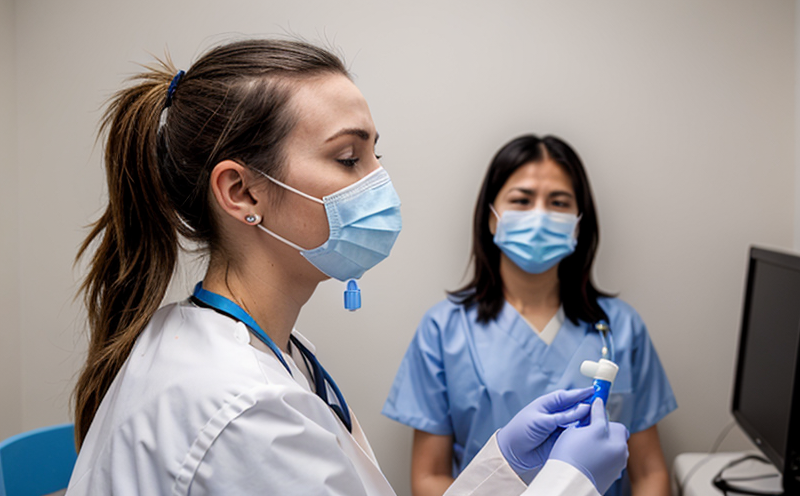Haemophilus parasuis (Glässer’s Disease) Testing in Pigs
The Haemophilus parasuis bacterium, also known as Glässer’s disease, poses a significant threat to pig health and productivity. This zoonotic pathogen is responsible for respiratory diseases that can lead to severe economic losses in the pork industry. Accurate diagnosis of this condition through reliable testing methods is crucial for effective treatment and control.
Testing involves several key steps including sample collection from infected pigs, preparation using standardized protocols, and analysis with high-resolution microscopy or culture-based techniques. The use of modern molecular diagnostics such as PCR (Polymerase Chain Reaction) ensures rapid detection even in subclinical infections.
The primary goal of the testing process is to identify H. parasuis at an early stage so that appropriate measures can be taken to prevent further spread within the herd. This includes isolation of affected animals, use of antibiotics under veterinary guidance, and implementation of biosecurity protocols.
In addition to clinical signs like coughing, sneezing, fever, and reduced appetite, laboratory tests play a vital role in confirming H. parasuis infection. These tests also help differentiate between this specific pathogen and others that may cause similar symptoms but require different management strategies.
To ensure accurate results, laboratories adhering to international standards such as ISO 17025 should perform these tests. Compliance with these guidelines ensures the highest level of quality assurance throughout the testing process from sample handling through final reporting.
| Test Method | Advantages | Disadvantages |
|---|---|---|
| Microscopy | Rapid detection; useful for initial screening | Potential need for skilled operators; less sensitive than PCR |
| Culture-Based Techniques | Highly specific; allows for identification of antibiotic resistance patterns | Takes longer to produce results compared to PCR; requires more resources and expertise |
| PCR (Polymerase Chain Reaction) | Fastest method available today; most sensitive, allowing detection even in low concentrations | Expensive equipment needed; skilled personnel required for operation |
The choice of test method depends on factors like resource availability, urgency of results, and the need to distinguish between various strains of H. parasuis. Regardless of which technique is used, rigorous adherence to best practices ensures accurate diagnosis.
Accurate identification of H. parasuis through reliable testing can significantly improve outcomes for affected pigs by enabling prompt intervention measures. Early detection allows veterinarians and farmers alike to make informed decisions regarding treatment options while minimizing potential spread within the herd.
By leveraging advanced diagnostic tools like PCR technology, laboratories specializing in clinical healthcare testing provide essential support for maintaining pig health and productivity. This not only benefits individual farms but also contributes positively towards overall public health by reducing the risk of zoonotic transmission.
Benefits
- Prompt identification leading to timely interventions
- Avoidance of unnecessary antibiotic use through targeted therapy
- Minimization of disease spread within the herd
- Enhancement of pig welfare and productivity
- Sustained compliance with animal welfare regulations
- Economic savings due to reduced treatment costs and increased production efficiency
Why Choose This Test
- Highly sensitive PCR technology ensures accurate detection even in low concentrations.
- Rapid turnaround times allow for swift implementation of control measures.
- Comprehensive data on antibiotic resistance patterns can inform appropriate treatment strategies.
- Supports compliance with international standards and best practices ensuring reliable results.
- Laboratories specializing in this area have experienced personnel capable of handling complex samples accurately.





